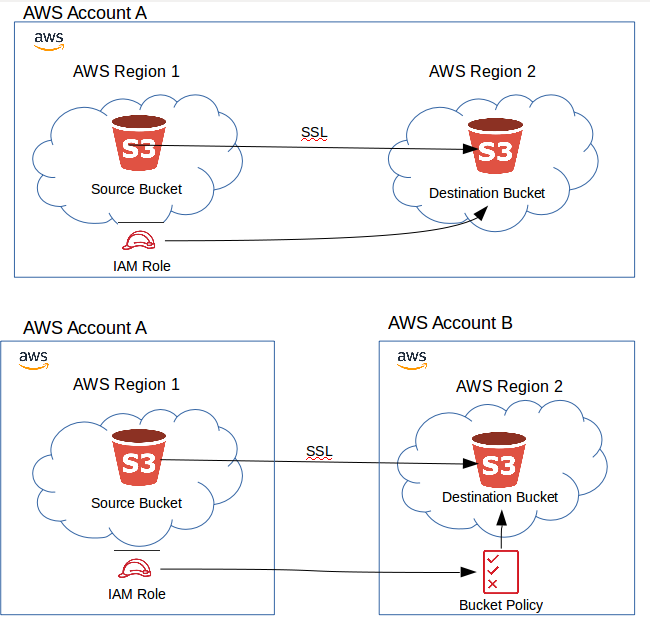AWS S3 replication is a feature that allows you to automatically and asynchronously replicate objects across different S3 buckets. This is useful for scenarios like disaster recovery, data sovereignty requirements, or low-latency access in different regions.

Types of Replication in S3:
-
Cross-Region Replication (CRR):
- Replicates objects from one bucket to another bucket in a different AWS region.
- Useful for reducing latency by placing data closer to users in different regions, meeting compliance requirements for data storage, and disaster recovery.
-
Same-Region Replication (SRR):
- Replicates objects from one bucket to another bucket within the same AWS region.
- Useful for creating backups, or managing data across different business units or teams within the same region.
Key Features:
- Bidirectional Replication: You can configure replication rules that replicate objects from Bucket A to Bucket B and vice versa.
- Prefix or Tag-Based Filtering: You can replicate only a subset of objects by filtering based on object prefixes or tags.
- Replication Time Control (RTC): Guarantees that 99.99% of objects are replicated within 15 minutes.
How to Set Up S3 Replication:
-
Enable Versioning:
- Both source and destination buckets must have versioning enabled.
-
Create an IAM Role:
- The IAM role needs permission to read from the source bucket and write to the destination bucket.
-
Set Up a Replication Rule:
- Define the source bucket, destination bucket, replication rule (e.g., replicate all objects, or based on specific prefixes/tags), and enable options like RTC if needed.
-
Monitor Replication:
- Use CloudWatch metrics to monitor the replication status and troubleshoot issues if any arise.
Considerations:
- Replication is one-way by default: Objects in the destination bucket are not replicated back to the source bucket.
- Storage Class: You can choose to replicate objects into a different storage class (e.g., Standard to Standard-IA) in the destination bucket.
- Cost: You incur costs for both storage in the destination bucket and the replication traffic.